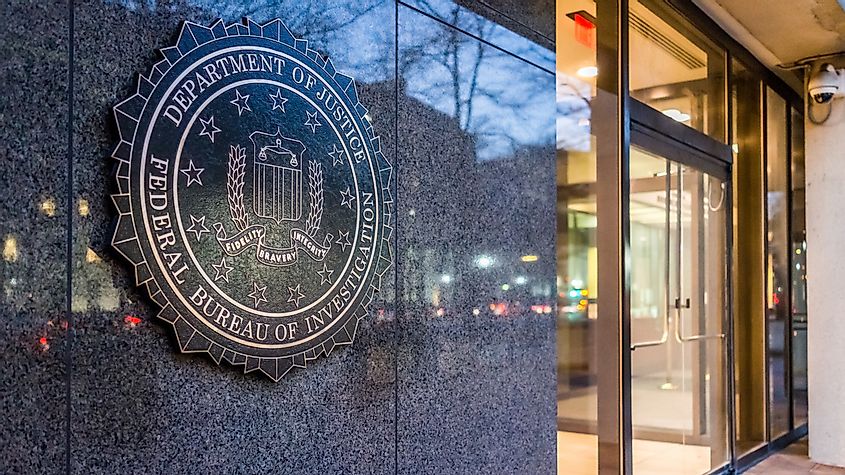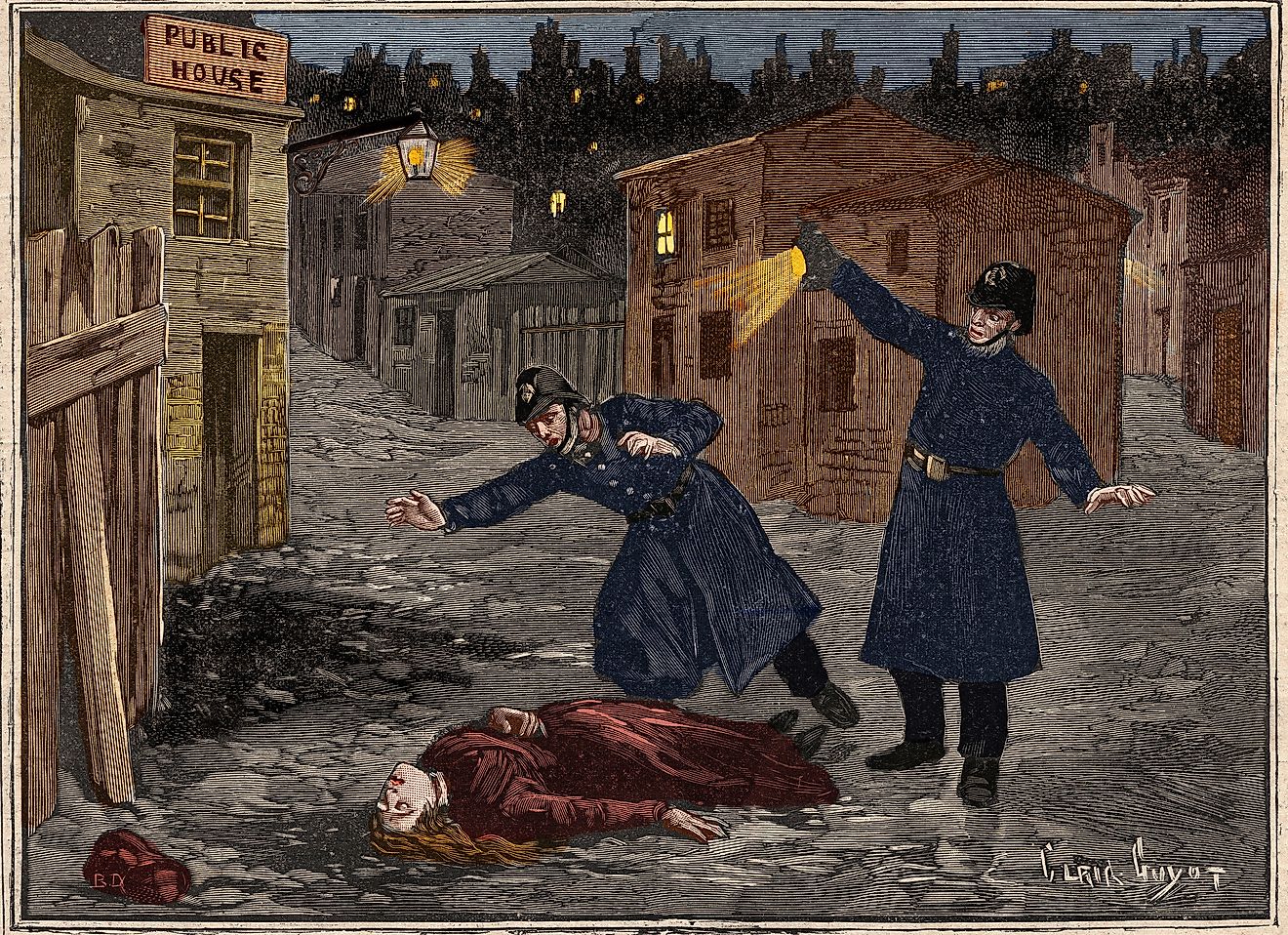Types Of Crimes By Number Of Offenses In The US

- Larceny-theft is the most common type of property crime in the US, and the District of Columbia has the highest rate of larceny-theft in the country.
- The FBI updated its definition of rape in 2013 as the previous definition of rape was outdated. The number of reported rapes is much higher using the revised definition vs the legacy definition.
- Motor vehicle theft applies to cars, trucks, motorcycles, buses, snowmobiles and ATVs. Motorboats and jet ski thefts are not included in the FBI's motor vehicle theft numbers.
The FBI’s Uniform Crime Reporting program aims to track crime statistics and trends in the United States. The FBI collects data from federal law enforcement agencies like state police, city police, tribal police, and campus police. Here’s a look at FBI crime stats for 2019.
Property Crime
According to the FBI, 6,925,677 acts of property crime were reported in the United States last year. This marks a significant decrease from the number of property crimes that were reported in 2018. The FBI reports that 7,196,045 property crimes took place in 2018, and the number of property crimes in the US has decreased significantly since 1993: FBI statistics show that the property crime rate has fallen 51% between 1993 and 2018. Property crime in the United States, which consists of larceny, burglary, motor vehicle theft, and arson, is predominantly committed by white people.
Larceny-Theft
Larceny-theft is a type of property crime, and it was the most frequently committed type of property crime in the United States in 2019. The FBI reports that 5,086,096 cases of larceny-theft were committed in the US last year, which was down from 5,217,055 offenses in 2018. The US larceny-theft rate is the highest in the District of Columbia with 3,775.4 offenses per 100,000 people. If we do not count DC given its small size, Louisiana would be the state with the highest larceny-theft at 2,352.4 per 100,000 people.
Burglary
The difference between burglary and larceny-theft is that burglary involves entering a structure such as a home or store to commit theft, whereas larceny does not involve a structure, like pickpocketing.
The FBI reports that there were 1,117,696 offenses of burglary reported in the US in 2019. Burglaries in the US decreased by 9.5% from 2018 and by 48.5% from 2010. The majority of burglaries take place on residential property, and the FBI says that burglaries in 2019 resulted in $3 billion worth of property losses. Force to gain entry is not required for a crime to be classified as a burglary; any unlawful entry with the intent to commit theft or a felony is considered burglary.

Violent Crime
Violent crime in the US has been declining significantly in the last few decades. The FBI reports that there were 1,203,808 offenses of violent crime in the US in 2019, which is down slightly from 1,206,836 cases in 2018. Violent crime in the US reached a peak of 1.93 million offenses in 1992. In 2014, the FBI reported the lowest number of violent crimes in the US with 1.15 million offenses. Murder, non-negligent manslaughter, rape, sexual assault, aggravated assault, and robbery are all classified as violent crimes by the FBI. The FBI does not have a formal definition for mass shootings, but the US has one of the highest mass shooting death rates per population in the world. In 2019, there were 417 mass shootings in the US, if we use the definition of a mass shooting being any incident where four or more people are shot, not including the perpetrator(s). The deadliest mass shooting in US history occurred in Las Vegas in 2017 when 60 people were killed.
Aggravated Assault
There were 821,182 cases of aggravated assault in the US last year, according to the FBI. The number of aggravated assaults rose slightly from 2018 when 807,410 cases were recorded. The FBI classifies aggravated assault as a violent crime with the intent to inflict severe bodily injury. Aggravated assaults are typically committed using weapons. If a victim of an assault does not sustain major injuries and no weapon is used, then the FBI records these attacks as simple assaults rather than aggravated assaults. When an incident involves aggravated assault as well as larceny-theft, it is classified as a robbery.

Motor Vehicle Theft
There were 721,885 instances of motor vehicle theft in the US in 2019. Motor vehicle theft applies to various types of land vehicles including cars, trucks, motorcycles, and even ATVs. According to the FBI, 74.5% of the motor vehicle thefts in 2019 were automobiles. Motor vehicle thefts in 2019 decreased by 4% from 2018 and resulted in a nationwide loss of about $6.4 billion.
Robbery
There were 267,988 robberies in the US in 2019. The FBI reports that firearms were used in 36.4% of robberies last year, while knives or cutting instruments were used in 8.5% of robberies. The number of robberies in the US has declined by 27.4% since 2010, and robberies resulted in a nationwide loss of $482 million last year.
Rape
The FBI reports rape statistics differently from any other type of crime. The FBI changed its definition of rape in 2013 to include non-consensual penetration of the vagina or anus with any body part or object, no matter how slight. Non-consensual oral penetration by a sex organ is also rape, and the FBI also records examples of attempted rape. There were 139,815 cases of rape in 2019 using this new revised definition. However, there would have only been 98,213 cases reported if the legacy definition was still used. The legacy definition the FBI used until 2013 was: "the carnal knowledge of a female forcibly and against her will." The updated definition is purposefully non-gendered and does not require the incident to be "forcible," given the prevalence of druggings used in rapes in recent decades. The FBI also keeps track of rapes using the old definition so trends in the number of rapes can be more accurately identified.

Murder and Non-Negligent Manslaughter
There were 16,425 cases of murder and non-negligent manslaughter in the US in 2019. Most of the murders occurred in the south. Though the number of total murders increased very slightly from 2018, the overall murder rate, the number of murders compared to the population, actually decreased in that time. Negligent deaths, suicides, accidental deaths, attempts to murder, and justifiable homicides are not included in the overall murder rate.
The Power of Statistics
The FBI has been recording crime statistics since 1930, and there have been many updates to the way the FBI records crime statistics over the last 90 years. The violent crime rate in the US has been declining significantly since 2000. In 2000, the violent crime rate was 506.5 crimes per 100,000 people. Today, the violent crime rate is only 366.7 violent crimes per 100,000 people. Political discourse in the US is not always representative of the reality of the country, which is why it is important for citizens to trust the data over the politics and look at the statistics. Though politicians have tended to characterize the US as in the throes of increased violence, the evidence does not support this claim.
Types Of Crimes By Number Of Offences In The US
| Rank | Type of Crime | Number of Offenses in 2019 |
|---|---|---|
| 1 | Property crime | 6,925,677 |
| 2 | Larceny-theft | 5,086,096 |
| 3 | Burglary | 1,117,696 |
| 4 | Violent crime | 1,203,808 |
| 5 | Aggravated assault | 821,182 |
| 6 | Motor vehicle theft | 721,885 |
| 7 | Robbery | 267,988 |
| 8 | Rape | 139,815 |
| 9 | Murder, manslaughter | 16,425 |











